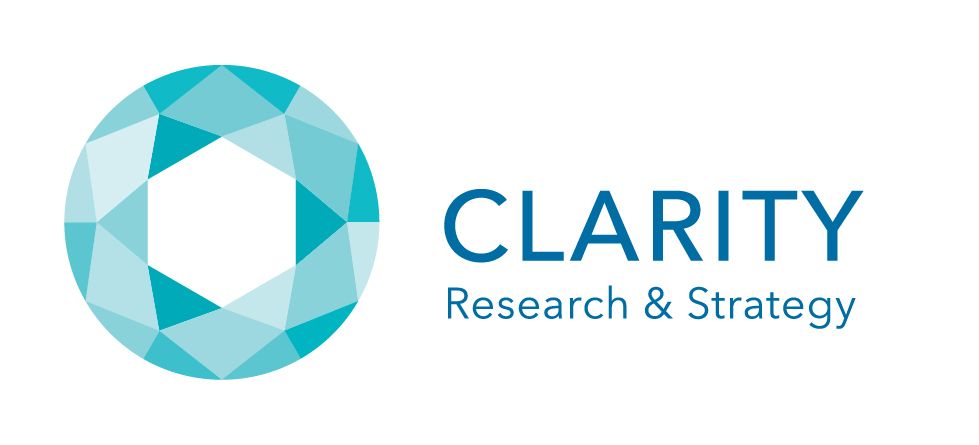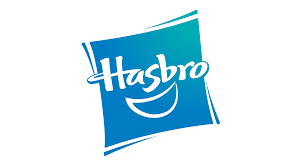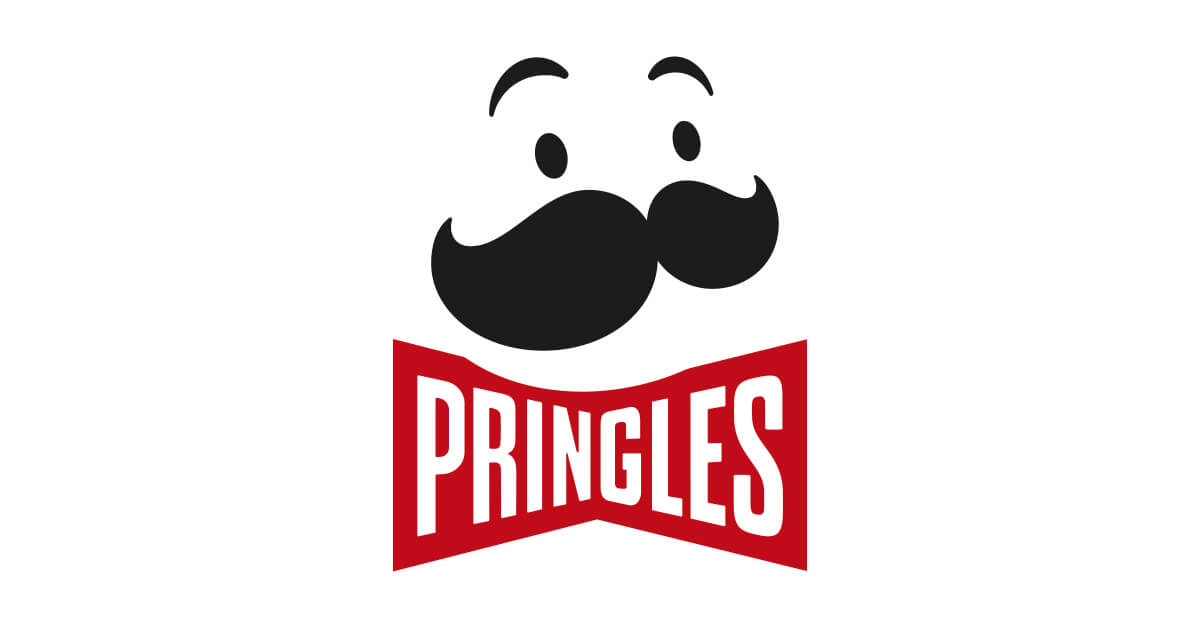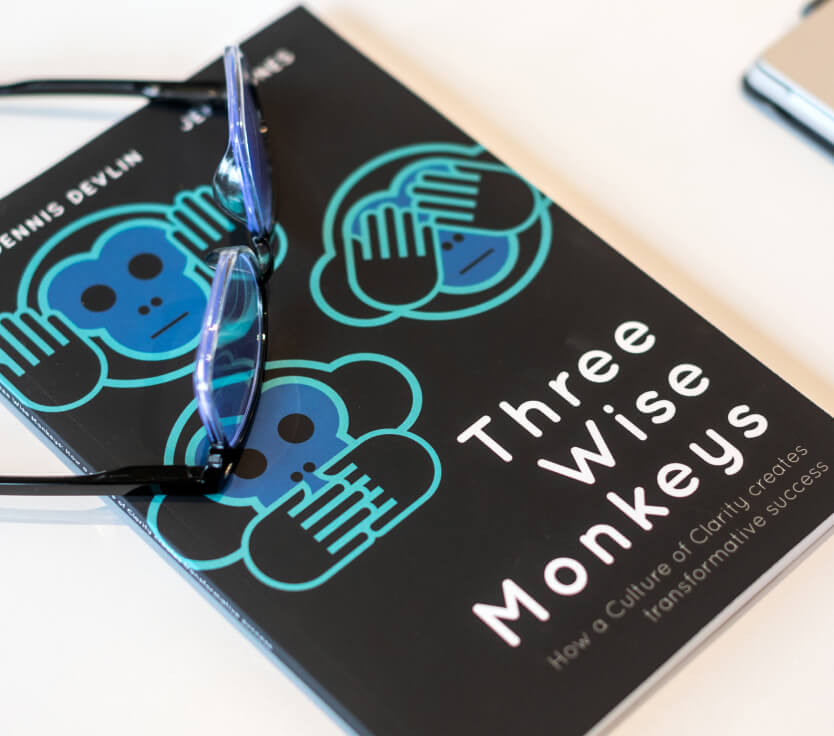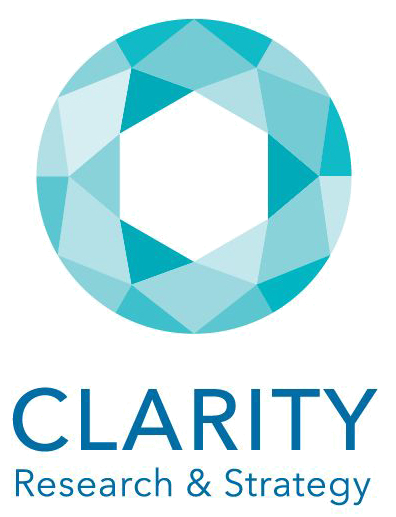CLARITY Research
& Strategy
Converts Curiosity To Clarity
By focusing on improving the front-end Research Development (Insight Roadmap) and back-end Strategy Development (Strategy Portal) of research engagements, serving as an ally for its clients, supporting their efforts to influence internal stakeholders and deliver financial business impact for marketing, research/insight professionals at large corporations.

CLARITY Research
& Strategy

Converts Curiosity To Clarity
By focusing on improving the front-end Research Development (Insight Roadmap) and back-end Strategy Development (Strategy Portal) of research engagements, serving as an ally for its clients, supporting their efforts to influence internal stakeholders and deliver financial business impact for marketing, research/insight professionals at large corporations.
A Research Contender Delivering
Significant Business Impact
Have you ever used a research provider that promised “partnership,” but instead offered a new method or technique that FAILED to deliver sufficient business impact?
CLARITY represents the difference between being a research “pretender” and being a research CONTENDER in terms of delivering significant business impact.
Market Research Insights and Strategy
Our MANIFESTO is that the importance of insights in corporations must be elevated, since they represent the seeds of growth and provide clarity in strategy development that delivers transformational success – for the business and the researcher leading the effort.

Market Research Insights and Strategy

Our MANIFESTO is that the importance of insights in corporations must be elevated, since they represent the seeds of growth and provide clarity in strategy development that delivers transformational success – for the business and the researcher leading the effort.
A Research Ally
For Your Business
Have you ever used a research provider that promised “partnership,” but instead offered a primarily transactional approach to working together that FAILED to deliver sufficient partnership?
If your corporation is going to experience transformational growth, you need a research ally that attacks the real problems, which are:

Limited Understanding
What you need is . . .
Aligned Knowledge
Most research vendors don’t understand your business or your strategy.

Convenient Sharing
What you need is . . .
Aligned Communication
It’s far easier for most research vendors to simply export the data and pass it along, instead of truly analyzing and identifying the implications.

Commodity Thinking
What you need is . . .
Aligned Influence
Most research vendors are unwilling to truly invest in their clients’ success, both your personal influence on internal stakeholders and the business’s financial impact.

CLARITY represents the difference between being a research “partner” and being a research ALLY in terms of delivering a mutually beneficial business relationship.
These Brands Have CLARITY

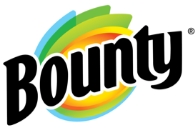












Invested Relationship
Taking Strategic Risks In The Pursuit Of Investing In Your Professional And The Business’s Financial Success

Have you ever used a research provider that promised they “cared” about your success, and your business’s success, but instead offered lip service that FAILED to deliver on that promise?
Modern research is fundamentally broken. There is an unwillingness by research vendors to spend the time needed to understand each client’s business, a commitment to the convenience of doing what virtually every other research company does, and an unwillingness to invest in the client’s success has led to ineffectiveness and a lack of business impact.
CLARITY represents the difference between being in a client-vendor relationship and having a meaningful INVESTED relationship where the research ally takes strategic risks in the pursuit of investing in your professional success and the business’s financial success.
In The News
Organization Alignment, the Business Power Play: Empowering Businesses Through a Strategy Portal
It is essential for organizations to have a clear and well-defined strategy based on solid, clear insights; that’s no secret. However, far too often, the
Unearthing Your Business’s Potential: The Art of Opportunity Archeology
Often business opportunities lie beneath the surface, just waiting to be discovered. Much like an archaeologist who painstakingly excavates ancient ruins to uncover hidden treasures,
Unlocking Business Potential: An Insight Roadmap is Just as Important as a Marketing Roadmap
A marketing roadmap has been a vital tool for marketers for many years. A marketing roadmap is a strategic planning tool that outlines the marketing
Business Partner or Business Ally? – Navigating Critical Business Relationships
Strong relationships are vital for business success, and understanding the various types of relationships is essential for effective collaboration. Two critical relationships in the business
Innovation and Marketing Insight Missions: Comparing an Insight Project to a Military Mission
Let’s explore the similarities between marketing insight projects and innovation insight projects (both referred to as an Insight Mission by CLARITY) and a military mission,
Cultivating New Market Insights: A Lesson from the World of Farming and Agriculture
The innovation and marketing insights process used to gain new insights is critical to the success of any business. This allows it to adapt and
CLARITY is an absolute best-in-class research ally. In addition to incredible depth of expertise and experience in the field, CLARITY goes above and beyond to deliver outstanding insights and results that create the foundation for game-changing strategies and campaigns. CLARITY are insightful strategic thinkers and provide outstanding input that makes the deliverables resulting from their findings and insights better and more impactful. Working with CLARITY is a joy – they are flexible, responsive, and go above and beyond the call of duty to ensure projects go smoothly and are delivered on tight and often rapidly shifting timelines.
CLARITY are those rare professionals who not only do an excellent job for their clients, but at a more than reasonable cost; they put their heart and passion into helping their clients achieve their goals. We depend on CLARITY’s expertise, insights, and creativity to handle our market research and strategy needs. They have been more helpful to us than they may realize. It is an absolute pleasure to know CLARITY and to do business with the firm. I highly recommend CLARITY.
And that’s just the beginning. CLARITY is passionate about their work. They approach everything professionally, but with an energy that creates excitement for every project. They understand the needs of the client and can easily translate business requirements into strategic designs and solutions. CLARITY is highly respected by colleagues, clients . . . anyone that works with them. I would recommend CLARITY any day!
Associations



CLARITY Helps Its Clients Gain Clarity About Their Customers, Their Competition, And Their Brand.
CLARITY Converts Curiosity To Clarity.
Get in touch today to establish your relationship with CLARITY.
